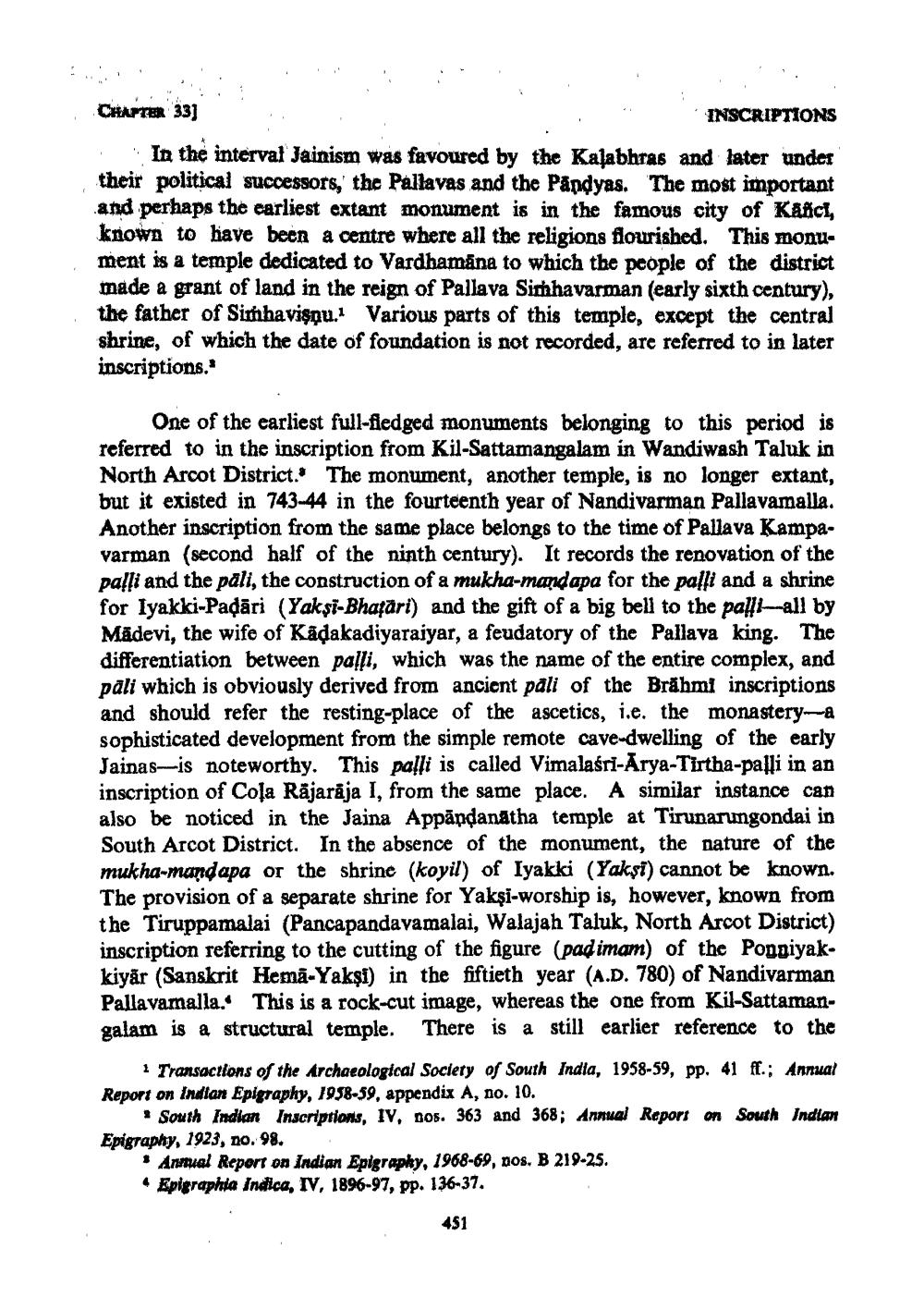________________
CHAPTER 33]
INSCRIPTIONS In the interval Jainism was favoured by the Kalabhras and later under their political successors, the Pallavas and the Påndyas. The most important and perhaps the earliest extant monument is in the famous city of Kanci, known to have been a centre where all the religions flourished. This monument is a temple dedicated to Vardhamāna to which the people of the district made a grant of land in the reign of Pallava Simhavarman (early sixth century), the father of Simhavişnu. Various parts of this temple, except the central shrine, of which the date of foundation is not recorded, are referred to in later inscriptions."
One of the earliest full-fledged monuments belonging to this period is referred to in the inscription from Kil-Sattamangalam in Wandiwash Taluk in North Arcot District. The monument, another temple, is no longer extant, but it existed in 743-44 in the fourteenth year of Nandivarman Pallavamalla. Another inscription from the same place belongs to the time of Pallava Kampa. varman (second half of the ninth century). It records the renovation of the palli and the pali, the construction of a mukha-mandapa for the paffi and a shrine for Iyakki-Padāri (Yakși-Bhajäri) and the gift of a big bell to the pallihall by Mädevi, the wife of Kadakadiyaraiyar, a feudatory of the Pallava king. The differentiation between palli, which was the name of the entire complex, and pali which is obviously derived from ancient pali of the Brāhmi inscriptions and should refer the resting-place of the ascetics, i.e. the monastery-a sophisticated development from the simple remote cave-dwelling of the early Jainas-is noteworthy. This palli is called Vimalasri-Arya-Tirtha-palli in an inscription of Cola Rājarāja I, from the same place. A similar instance can also be noticed in the Jaina Appăpdanātha temple at Tirunarungondai in South Arcot District. In the absence of the monument, the nature of the mukha-mandapa or the shrine (koyil) of Iyakki (Yakşi) cannot be known. The provision of a separate shrine for Yakşi-worship is, however, known from the Tiruppamalai (Pancapandavamalai, Walajah Taluk, North Arcot District) inscription referring to the cutting of the figure (pad imam) of the Poppiyakkiyar (Sanskrit Hema-Yakşi) in the fiftieth year (A.D. 780) of Nandivarman Pallavamalla. This is a rock-cut image, whereas the one from Kil-Sattamangalam is a structural temple. There is a still earlier reference to the
Transactions of the Archaeological Society of South India, 1958-59, pp. 41 ff.; Annuat Report on Indian Epigraphy, 1958-59, appendix A, no. 10.
South Indian Inscriptions, IV, nos. 363 and 368; Annual Report on South Indian Epigraphy, 1923, no. 98.
* Annual Report on Indian Epigrapky, 1968-69, dos. B 219-25. • Epigraphia Indica, IV, 1896-97, pp. 136-37.
451




